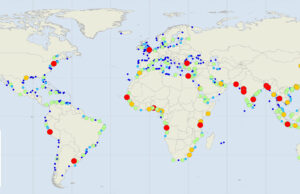The storage of digital information often takes place in a kind of non-volatile memory known as flash memory. It refers to a form of computer memory that can keep its data intact even if the power is cut off. This distinguishes it from conventional RAM (Random Access Memory), which must be connected to a source of continuous power in order to store data. Flash memory is used often in a wide range of electronic gadgets, including mobile phones, digital cameras, computers, and USB drives, amongst others.
Why Is Flash Memory Important?
The usage of flash memory in current technology is quite prevalent; it can be found in smartphones, computers, cameras, and USB drives, amongst a great deal of other electronic equipment. Its widespread use may be attributed to the several benefits it offers over more conventional forms of memory. Flash memory is a kind of memory that is not only quick but also has a low power consumption. Because of its diminutive size and low weight, it is well suited for incorporation into mobile devices like laptops and smartphones.
Flash memory is a kind of non-volatile memory, which implies that it can keep its data even if the power is turned off to the device it’s stored in. In contrast to this is RAM, also known as Random Access Memory, which must have a continual source of power in order to keep data. Because of this characteristic, flash memory is a suitable storage option for portable devices like smartphones, since it is able to keep data even when the device is switched off or the battery is depleted.
Understanding How Flash Memory Stores Data
The data is stored in memory cells, which are built out of transistors, and this is how flash memory works. These transistors are responsible for storing the data as electrical charges in their respective locations. Because the electrical charges that are stored in the memory cells are preserved when the power is switched off, the information that is kept in those cells is also preserved. Because of this property, flash memory is a sort of memory that is non-volatile.
When data has to be written to flash memory, the transistors in the memory cells are charged or discharged to indicate a 1 or 0. This ensures that the data is recorded correctly. When it is necessary to retrieve data from flash memory, the state of the transistors is examined to establish the significance of the information that has been saved.
NAND – A Popular Type of Flash Memory
NAND flash memory is often considered to be among the most widely used varieties of flash memory. NAND flash memory is a particular kind of flash memory that stores data in a certain fashion, which is referred to as NAND architecture. The quantity of data that can be stored in NAND flash memory is substantial, yet its production is not too costly. Memory cards, USB drives, and solid-state drives are all typical places you’ll see it utilized (SSDs).
3D NAND is yet another kind of flash memory that is gaining more and more attention these days. The term “3D NAND” refers to a kind of flash memory that, contrary to its name, is organized along all three dimensions rather than just two. Because of this, a greater density of memory cells is possible, which implies that more information may be stored in a space that is the same size. In addition to this benefit, 3D NAND flash memory offers the advantage of being more dependable and long-lasting than conventional NAND flash memory.
Advantages of Flash Memory Over RAM
The speed of flash memory is another benefit that it offers. Flash memory is far quicker than conventional mechanical hard drives, which use data access mechanisms that depend on moving components. Flash memory is also quicker than RAM, which is a sort of memory that loses data if it isn’t supplied with power consistently. RAM is a volatile type of memory. Because of this, flash memory is an excellent storage option for electronic devices like laptops and smartphones that need quick access to the data they store.
Because of its low power consumption, flash memory is well suited for usage in portable electronic devices such as mobile phones and laptop computers. The reason for this is because, unlike RAM, it does not need a continual supply of electricity in order to store data, as opposed to RAM, which does require a constant supply of power. This function helps devices that use it have a longer battery life overall, which is another benefit of using it.
Disadvantages of Flash Memory
The short lifetime of flash memory is one of the technology’s drawbacks. Flash memory has a fixed number of write cycles, which means that it can only be written to a specific number of times before it starts to lose its dependability..
In addition, despite the fact that flash memory is famous for its speed and low power consumption, it is possible that it is not as quick as other forms of memory such as RAM. That it can only hold a certain quantity of data at any one time, it is not ideal for some applications that demand high-speed data processing. The reason for this is because it can only store a limited amount of data at any given moment. The fact that flash memory might be more costly than conventional hard drives is another drawback of this storage medium.
Wrapping Up
In conclusion, flash memory is a kind of memory that is increasingly replacing conventional memory due to the various benefits that it offers. It has a long life, a high speed, and a minimal amount of power consumption. Because of its diminutive size and low weight, it is well suited for incorporation into mobile devices like laptops and smartphones.
When contemplating the use of flash memory as a solution for data storage, it is essential to be aware of the constraints it imposes, since it is impossible for it to be faultless. In addition, it is essential to back up your data on a consistent basis since there is a certain amount of times that data may be written over.














